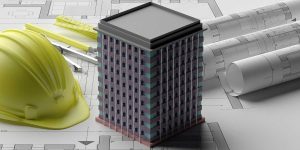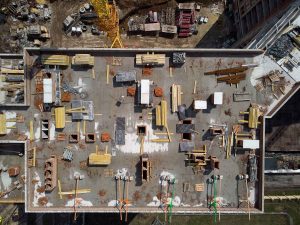If You Don’t Know About The Construction Industry Trends In The United Kingdom, Then This Blog Is For You.
The construction industry is ever-evolving, and every year some new trends add up. From traditional construction techniques to drastic technological advancements, the construction industry has come a long way.
Technology is evolving to accommodate the modern demands of businesses and easing human work by upgrading it to a new term, namely smart work. And with these technological advancements, the construction industry is no exception.
Just like the other industries, the construction industry has also adopted new construction trends and technological advancements and has brought real change in the field. Many trends make the whole construction work quick, easy, and efficient. So, let us get familiar with them.
New Construction Trends in the UK
Construction Technology is a term used for several types of technology with a specific use in the construction industry. Smart machinery, automated robots, drones, wearables are some of the construction trends increasingly being used in the construction field.
All these constructive technologies are being adapted to improve the work conditions, improve health and safety measures, boost efficiency, and several other benefits.
Let us dive into some UK construction trends that can change the definition of traditional construction procedures.
1. Protective Equipment

Wearable technology in the construction industry is being embedded into personal protective equipment and apparel. These are being outfitted with environmental sensors, GPS, biometrics, voltage detectors, Wi-Fi, and several other sensors to monitor the movements.
The pandemic has drastically impacted the industries, and the construction industry is no different. And even the state regulations emphasizing strict safety protocols and cleanliness in the construction field. With this, wearable innovations are making their way to the construction site. For instance, the work boots connected to the Wi-Fi raise an alert if a person falls.
The embedded wearable with biometrics sensors can track a person’s body temperature, heart rate, and other vital signs. This immediately notifies the manager if a particular person is suffering from an issue.
Safety has always been a hot high priority in construction due to the danger involved in the tasks. And thus, the inclusion of wearable technology in construction has a significant impact and is lending hands to the safety of the workers. It is a proactive approach indeed that is associated with the workers’ safety.
Advantages of wearable technology in the construction industry
- Enhanced online safety
- Improved workplace efficiency
- Improved communication
- Attracting younger workforce
- Improved management and resource planning
2. Collaborative Software Solutions

Collaborative software solutions are the essentials that are required to communicate easily and quickly in real-time. The decisions often have to be made promptly in the construction field so that one can access the most updated information.
Access to updated information is vital to avoid expensive rework and keep the construction projects within budget and stringent time deliveries. And the best part of using collaborative software solutions is that it allows multiple users to work together in real-time. That means all the professional advice on one platform working collaboratively to produce the desired outcome.
Advantages of collaborative software solutions in the construction industry
- Cost projection
- Cost value reconciliation
- Financial operations management
- Document management
- Remote access and updating
3. Building Information Modeling

BIM, an acronym of Building Information Modeling, incorporates the digital representations of functional and physical aspects of a building that can lead to a better designing and construction of the projects.
The contractors use BIM to understand the scope, design, and intent of the project with the help of 3D modeling. It also helps estimators generate the exact quantities of building materials, cost estimates, planning, scheduling, and clash detection.
BIM technology is a strong foundation that has numerous benefits and is also used as the powering base for other construction technologies, including artificial intelligence, digital twins, and many more.
The digital twin technology creates a virtual concept of a building by utilizing the IoT, sensors, and drones to gather data. The collected data is then processed using AI, machine learning, and advanced analytics to create a virtual model of the building.
Advantages of BIM in Construction Industry
- Cost and resource savings
- Improved communication and coordination
- Greater efficiencies
- High-Quality results
- More opportunities for modular construction and prefabrication
4. Artificial Intelligence

AI focuses on the technology that allows machines and computers to mimic human intelligence. Confused? Machine learning is a subset of AI that uses algorithms to learn from data, make decisions devoid of having to be programmed, and identify the patterns; all these are having the biggest impact on the construction industry.
Construction projects usually create a bulk of data that is great for AI as that gathered data over the years can be utilized to improve the ML and predict future results on projects. This certainly will help in scheduling, mitigating risks, and enhance productivity.
AI is also used to monitor workers and also in identifying safety hazards. Construction project planning is an area where AI shines in stimulating the projects in just minutes.
Advantages of Artificial Intelligence in the Construction Industry
- Better design of buildings
- Better financial planning and project management
- Increased Productivity
- Increased Safety
5. Augmented And Virtual Reality

Augmented reality and virtual reality are emerging technologies that are on the rise for development. The immersive visualization has been made possible by Virtual reality combined with BIM is enhancing the design, communication, and collaboration for the construction industry.
Additionally, it allows the architects to showcase their designs in 3D formats to the clients so that the client can better understand the probable outcome they will get post-construction.
Virtual reality is also helping the construction industries to conduct equipment operator training, safety training, and business system installation training to develop competent capabilities in the construction workers. With VR, the construction workers can get exposure to what to expect and perform in controlled environments where the scenarios are different and several other training modules.
AR, in turn, overlays the digital objects to the real world. AR applications in construction utilize vision-based AR using markers like QR codes, GPS, installation instructions, architectural drawings and images, safety checklists, and many more to help workers on job sites.
Advantages of AR & VR in the Construction Industry
- Better Collaboration
- Real-time design feedback
- Risk assessments
- Safety improvements and training
6. Construction Drones And Robots

Automation of construction works with robotics and drones is having a massive impact on productivity and safety. Construction robots are usually used to perform repetitive, simple, and labor-intensive tasks like tying rebar, laying bricks, and installing drywalls.
Although technology has helped ease labor work, and humans are still required to perform the work and set up the robots on the job site to get them started.
Rather than replacing the human workers, the construction robots help and aid the performance of a worker and enable them to be more productive. It also extends their careers by diminishing the wear and tear on their bodies.
Construction drones are used on job sites for performing site surveys, inspecting structures, and making construction on-site safer. From monitoring the progress of projects, conducting site inspections, and identifying the potential hazards each day, construction drones take care of it all.
Though drones do not eliminate the need for workers the workers need to be trained on how to use the technology to perform various tasks. Drones outfitted with laser scanners, cameras, and other devices can improve the work efficiencies on the job site.
Due to the many applications and additional benefits of using drones, their adoption is continuously growing.
Advantages of Drones and Robots in the Construction Industry
- Enhanced Site Safety
- Drones can be used to deliver materials to sites
- Robots improve the speed and quality of work
- Remotely controlled
7. Prefab, Modular, And Offsite Construction

As per last year’s construction technology report, around seventy-eight percent of the commercial construction utilized prefabrication. If it is executed appropriately, offsite construction eliminates several inefficiencies found in a typical job site.
Offsite construction is usually performed in a controlled environment. Workers have the materials and tools to perform their tasks with the same consistency. This assembly plant method diminishes the wastes and allows the workers to be more productive throughout.
Prefabrication building components usually cover everything, including the framing, wall panels, floor systems, windows, and door assembly, multi-trade racks panelled with all wiring, ductwork, and plumbing all packaged together.
Advantages of Prefab, modular and offsite construction
- Cost-effectiveness
- Quality Control
- Better safety and security
- Reduced site disruption
Bottom Line!
15+ Global Megatrends that are Shaping the Future of Construction Industry
If we consider the positive takeaway in the construction industry from last year, it is the inclusion of advanced construction technology adoptions to the field to such an excellent level that wouldn’t have been achieved for years.
Technology is indeed the future of the construction industry that is helping in enhancing productivity, attracting young, skilled, and capable workers to use smart technologies, eliminating inefficiencies, and making the job sites safer than ever.
Discover Our Construction Services
 06 September 2024
06 September 2024 06 September 2024
06 September 2024 05 June 2024
05 June 2024 05 June 2024
05 June 2024 05 June 2024
05 June 2024










mangat